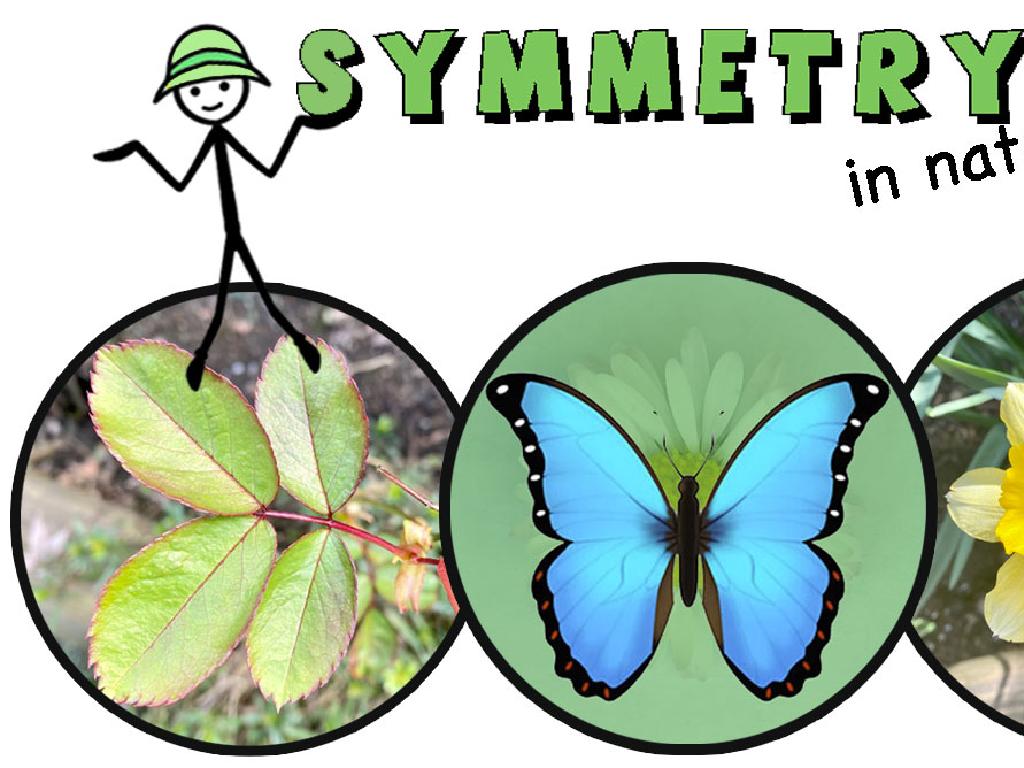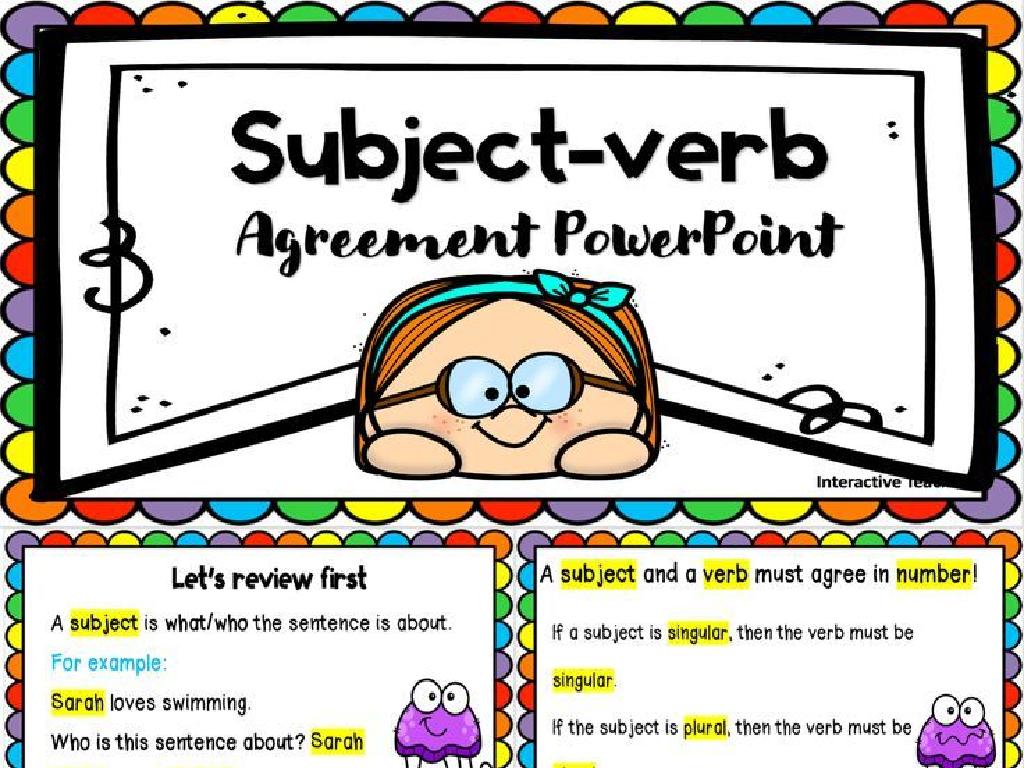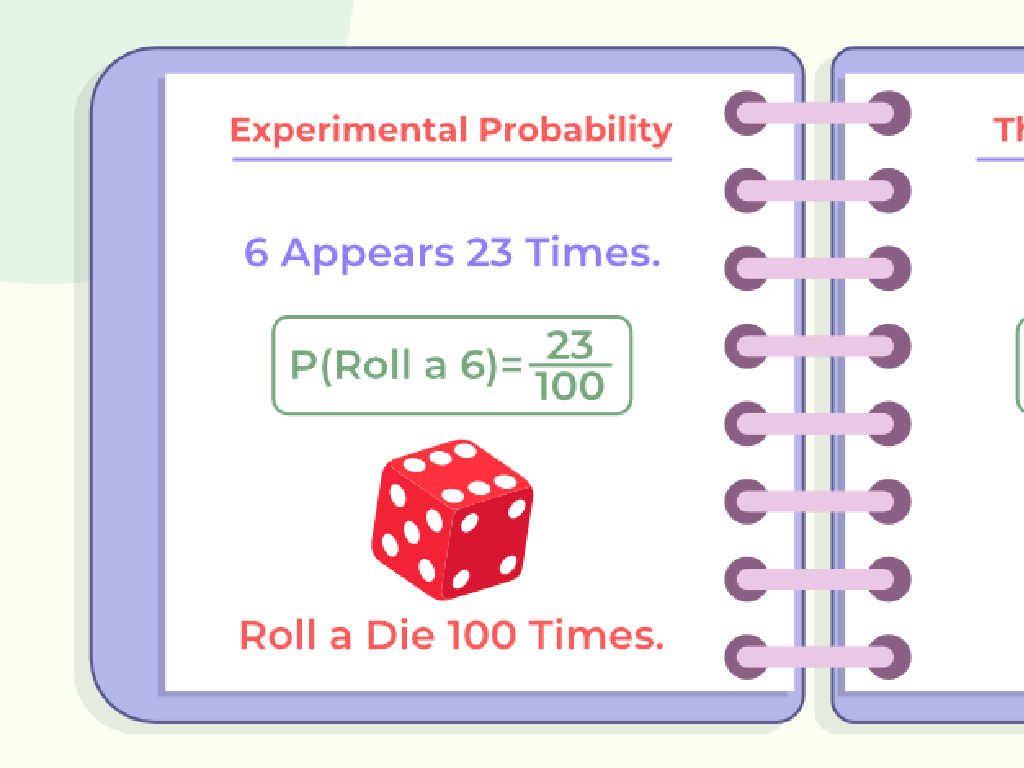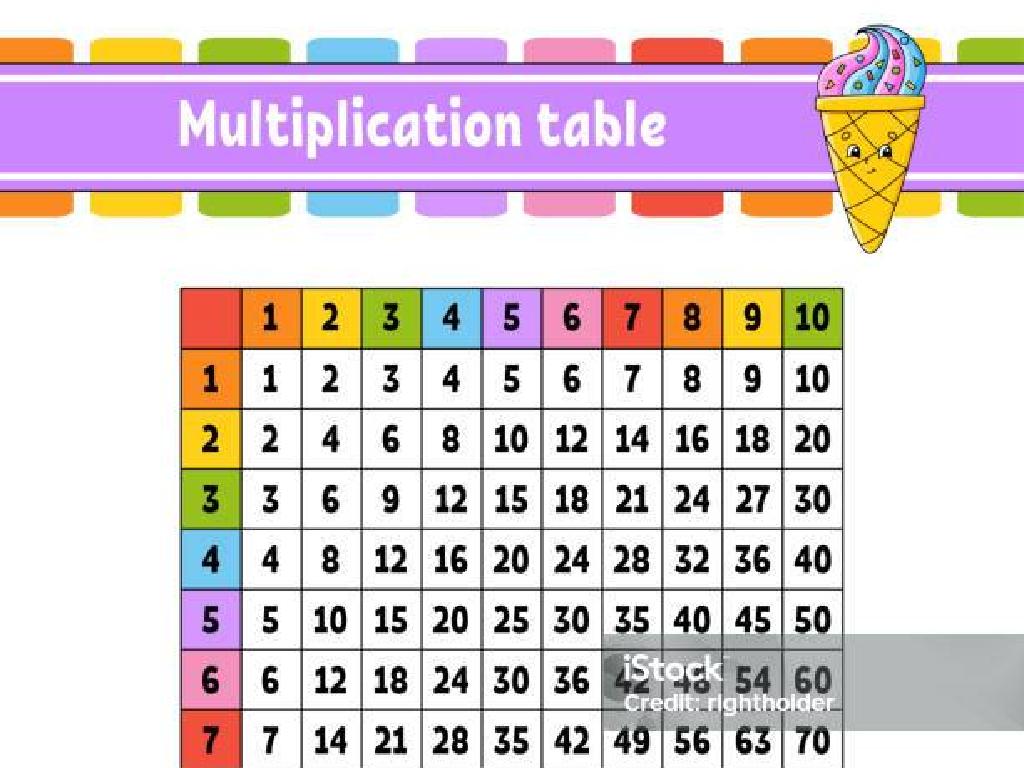What'S The Difference Between Weather And Climate?
Subject: Science
Grade: Third grade
Topic: Weather And Climate
Please LOG IN to download the presentation. Access is available to registered users only.
View More Content
Weather vs. Climate: Understanding Our World
– Weather: Day-to-day changes
Weather includes temperature, rain, or snow that changes often.
– Climate: Long-term patterns
Climate is the average weather over many years in a place.
– Observing weather outside
Look out the window, what’s the weather like today?
– Weather’s impact on choices
How do we decide what to wear? Weather helps us choose!
|
This slide introduces the concepts of weather and climate to third-grade students. Begin by explaining that weather is what we experience outside on any given day, including sunshine, rain, wind, and snow, and it can change quickly. Climate, on the other hand, is the average of all these weather conditions over a long period, typically 30 years or more, in a specific area. Encourage students to observe the weather outside their windows and think about how it affects what they do each day, such as dressing up for school or choosing activities. This will help them understand the immediate effects of weather and the broader concept of climate as a more consistent backdrop to our environment.
Understanding Weather
– Weather is the current condition
– What we see outside our window at any moment
– Types: Sunny, Rainy, Windy, Snowy
– Each type of weather is unique and has its own effects
– Weather changes often
– It can be sunny in the morning but rainy by afternoon
– Weather affects our daily choices
|
This slide introduces the concept of weather to third-grade students. Begin by explaining that weather is what we experience outside at any given moment, like the warmth of the sun or the wetness of rain. Discuss the different types of weather and how each type can affect activities, such as needing an umbrella for rain or a hat for sunny days. Emphasize that weather can change quickly, which is why sometimes we might experience several types of weather in a single day. Encourage students to share their own experiences with sudden weather changes and how it impacted their plans or activities.
Observing Weather: Tools and Techniques
– How we observe weather
– We look outside and use tools to see what the weather is like!
– Tools for measuring weather
– Thermometer for temperature, wind vane for wind direction, rain gauge for rainfall
– Keeping a weather journal
– Write down daily weather to see patterns over time
|
This slide introduces students to the concept of observing and recording weather. Start by discussing how we can use our senses to observe the weather: we can feel the temperature, see the clouds, and hear the rain. Then, introduce the tools meteorologists use to measure weather more accurately: a thermometer to measure temperature, a wind vane to determine wind direction, and a rain gauge to measure how much rain has fallen. Explain the importance of keeping a weather journal, noting daily weather conditions to track changes over time. This activity can help students understand the difference between daily weather (short-term changes) and climate (long-term patterns). Encourage students to start their own weather journals and share their observations.
Understanding Climate
– Climate: usual weather over time
– Climate is what you expect, like a hot summer or a cold winter
– Types of climate: Tropical, Desert, Polar, Temperate
– Tropical is hot and rainy, Desert is dry, Polar is cold, Temperate has all seasons
– Climate stability over time
– Unlike weather, climate doesn’t change much from day to day
– Climate vs. Weather
– Weather is day-to-day, climate is the long-term pattern of weather
|
This slide introduces the concept of climate as a long-term pattern of weather in a particular region. It’s important to convey that climate is the average of weather over many years, not what we see in a short period. Use examples of different climates like tropical or desert to illustrate the variety of climates around the world. Emphasize that climate is relatively stable and changes very slowly, whereas weather can change from day to day. This distinction helps students understand the broader concept of climate in contrast to the daily weather they experience.
Weather vs. Climate: Understanding the Difference
– Weather is short-term changes
– Climate is long-term patterns
– Weather is like mood, climate like personality
– Mood changes often, personality is overall feeling
– Understanding both is crucial
– Helps us prepare for future, protect our planet
|
This slide aims to clarify the difference between weather and climate to third-grade students. Weather refers to the day-to-day conditions and changes in the atmosphere, such as rain, sunshine, or snow, which are temporary. Climate, on the other hand, is the average weather conditions in a place over a long period, usually years. An analogy is used to make this concept relatable: weather is like your mood, which can change frequently, while climate is like your personality, which is consistent over time. Understanding both concepts is important because it helps us prepare for different weather events and understand long-term changes in our environment, which can affect how we live. Encourage students to think of examples of weather and climate they have experienced or learned about.
Class Activity: Weather Reporters
– Become a weather reporter
– Observe today’s weather
– Look at the sky, feel the air, and notice the temperature
– Create your weather forecast
– Use drawings or props to show sunny, rainy, or windy weather
– Present to the class
|
In this engaging class activity, students will step into the role of weather reporters. They will start by observing the weather outside, taking note of the sky’s appearance, the air’s feel, and the temperature. Students should be encouraged to use descriptive words to capture their observations. Afterward, they will create a short weather forecast presentation, which they can illustrate with drawings or props to represent different weather conditions like sunshine, rain, or wind. Finally, each student will have the opportunity to present their forecast to the class, practicing their public speaking skills and sharing their understanding of weather. For the teacher: Prepare a list of weather-related vocabulary, provide materials for creating visual aids, and consider setting up a mock ‘weather station’ corner for presentations.
Class Activity: My Climate Poster
– Design your climate poster
– Include local plants and animals
– Think about the trees, flowers, and creatures you see around
– Present your poster to the class
– Explain your climate discoveries
– Share what makes your climate special and what you’ve learned
|
This activity encourages students to explore and understand the climate of their local area by creating a poster. Provide them with poster paper and art supplies. Explain that climate is the average weather in a place over many years. Guide them to consider the types of plants and animals that thrive in their climate and how the weather affects these living things. Each student will present their poster to the class, explaining their findings and what they’ve learned about how climate differs from daily weather. Possible activities: drawing local wildlife, researching local weather patterns, listing seasonal changes, or depicting human adaptations to the climate.
Wrapping Up: Weather vs. Climate
– Weather is day-to-day changes
– Climate is the long-term pattern
– Knowing both helps us plan ahead
– Understanding patterns helps predict future conditions and prepare for them
– Any fun weather facts or questions?
– Share interesting facts or ask about weather and climate
|
As we conclude, remember that weather refers to short-term atmospheric conditions while climate describes the average weather over a long period in a specific area. Emphasize the importance of understanding both concepts to make informed decisions about future activities and to prepare for different environmental conditions. Encourage students to ask questions or share any fun facts they’ve learned about weather and climate. This engagement will help solidify their understanding and make the topic more memorable.






